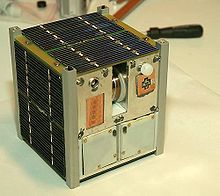
nCube (satellites)


NCube (Norwegian CubeSat) was a series of two Norwegian satellites, made by students at several Norwegian universities and university colleges. Due to problems during launch (NCube-1) and deployment into orbit (NCube-2), neither of the satellites became operational.[1]

Both satellites were built to the CubeSat picosatellite standard, which defined their mass and size (10 cm cube). This standard allows one or more cube satellites to be launched by 'piggybacking' with a larger satellite. In this way the smaller satellites get a cheap ride into orbit.[citation needed]

The goal of the NCube satellites was to stimulate interest in science and increase competence in space technology among students and educational institutions. Moreover, enhance cooperation between educational institutions and industry and exchange of knowledge between educational institutions in north and south of Norway.[citation needed]

The second goal was to communicate with amateur radio ground stations, and to test a space-born Automatic Identification System (AIS) receiver for tracking ships and reindeer.

NCube-2 was launched into orbit on 27 October 2005 from Plesetsk in Russia. NCube-1 was scheduled to be launched in January 2006, but the launch was postponed until July of the same year. The launch of both satellites has been postponed several times.

As of 2013, NTNU was developing a 2U CubeSat called NUTS-1.

See also
References
- ^ "nCube: The first Norwegian Student Satellite". Retrieved 27 October 2021.
External links

See what we do next...
OR
By submitting your email or phone number, you're giving mschf permission to send you email and/or recurring marketing texts. Data rates may apply. Text stop to cancel, help for help.
Success: You're subscribed now !
